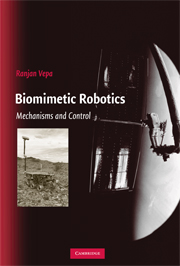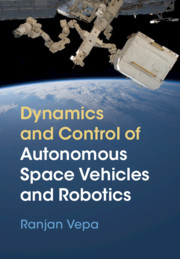Biomimetic Robotics
This book is written as an initial course in robotics. It is ideal for study of unmanned aerial or underwater vehicles, a topic on which few books exist. It presents the fundamentals of robotics, from an aerospace perspective, by considering only the field of robot mechanisms. For an aerospace engineer, three dimensional and parallel mechanisms – flight simulation, unmanned aerial vehicles, and space robotics – take on an added significance. Biomimetic robot mechanisms are fundamental to manipulators, walking, mobile, and flying robots. As a distinguishing feature, this book gives a unified and integrated treatment of biomimetic robot mechanisms. It is ideal preparation for the next robotics module: practical robot control design. While the book focuses on principles, computational procedures are also given due importance. Students are encouraged to use computational tools to solve the examples in the exercises. The author has included some additional topics for the enthusiastic reader to explore.
- Unified and integrated treatment of biomimetic robot mechanisms
- The appendices provide a basic introduction, to attitude representation, dynamics and control
- Includes realistic examples and exercises in every chapter
- Focuses on principles, but computational approaches are also addressed
Reviews & endorsements
"...a well-organized book for understanding the basic concepts and theories of robotic control. ... The book introduces every aspect in a progressive way, chapter by chapter, helping the reader to get deeper into theory and concepts." Artificial Life
Product details
April 2009Adobe eBook Reader
9780511501159
0 pages
0kg
35 tables 122 exercises
This ISBN is for an eBook version which is distributed on our behalf by a third party.
Table of Contents
- 1. The robot
- 2. Biomimetic mechanisms
- 3. Homogeneous transformations and screw motions
- 4. Direct kinematics of serial robot manipulators
- 5. Manipulators with multiple postures and compositions
- 6. Grasping: mechanics and constraints
- 7. Jacobians
- 8. Newtonian, Eulerian and Lagrangian dynamics
- 9. Path planning, obstacle avoidance and navigation
- 10. Hamiltonian systems and feedback linearization
- 11. Robot control
- 12. Biomimetic motive propulsion
- Answers to selected exercises
- Appendix: attitude and quaternions.




